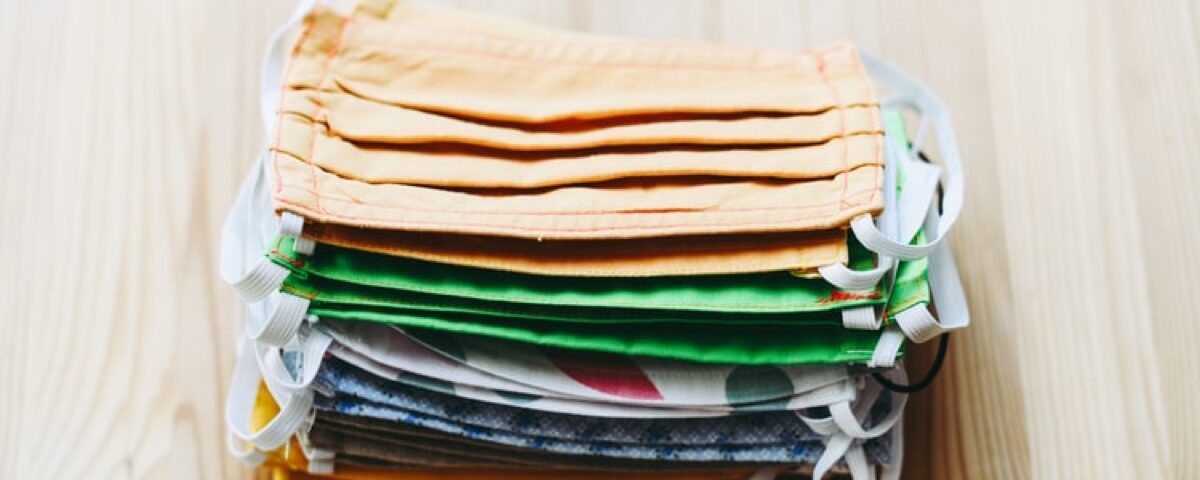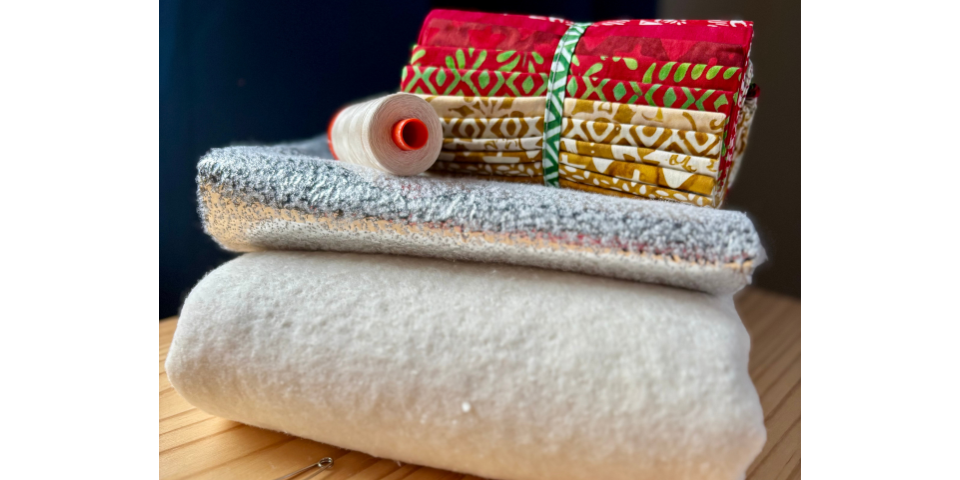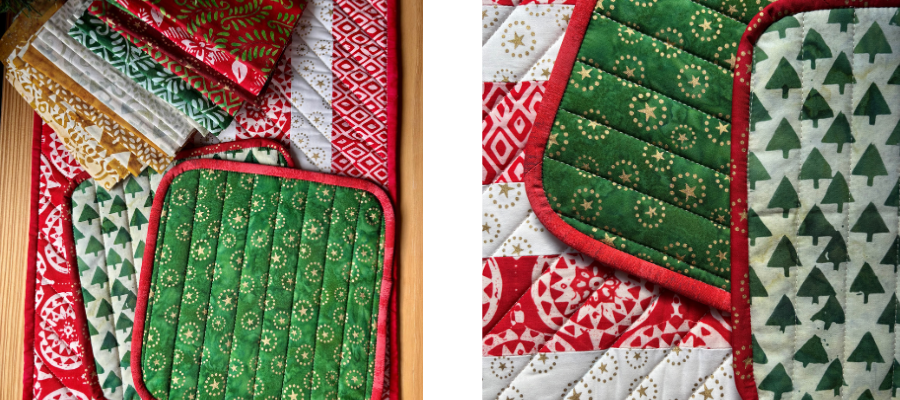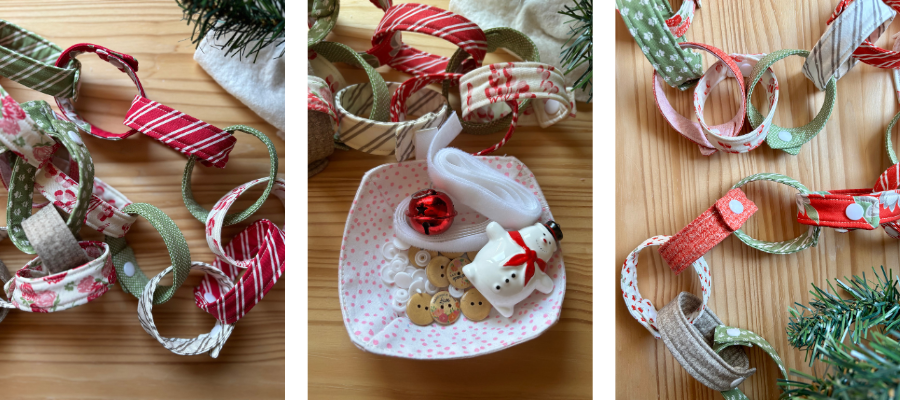Mask Making For Quilters: 5 Top Tips & 3 Free Patterns

We’ve been living with the COVID-19 pandemic for a while, and it looks like masks will be a part of everyday life for some time yet. Why not use your craft to make the best masks possible for you and your family? Here we’ve collected a few of our favourite free patterns, as well as key fabric considerations for comfort, style and protection. We invite you to try out some different patterns to find the most comfortable fit and fabric that expresses your personality.
3 Great Free Mask Patterns
1. The Traditional Pleated Mask
Noted crafter and blogger Sarah Maker offers an excellent tutorial on created a pleated face mask, which includes options such as a filter pocket, nose wire, and ties for around your head if you want to avoid ear loops. This type of mask is easy for beginners as there are no curves to sew. You will need to go slowly over the pleats as it gets quite thick in places.
2. The Olson Fitted Mask
This mask doesn’t require a nose piece and is contoured to fit the face using curved templates. This pattern with adjustables ear loops from Sew Can She has smaller sizes for children included. If you don’t have adjustable ties that are called for, you can make loops from cut elastic for fixed length ties: around 7 ¼” in length is good for adults with a ¼” overlap, or 6 ¾” or 6 ¼” for the two adult sizes. Make sure you sew through the elastic once it’s inside the mask so that it doesn’t separate. If you find the pattern is fitting a bit big, you can trim down the pattern along the flat edge where the elastic goes.
3. No Fog Mask
This mask is another 3D style, but designed specifically for those of us who wear glasses. It has an additional panel so that the fabric sits flush to your face and doesn’t steam up your glasses! Instead of curves, it uses darts and a large pleat to make the shape. Be sure to backstitch over your elastic ends for extra strength.
5 Tips and Considerations on Mask Making
1. Have the Right Tools on Hand
Thankfully, you don’t need a lot of supplies to get started on making any mask. Keeping things simple, you will need a sewing machine, some sharp scissors, and an iron. For the Olson mask, you will need to print out the templates, but the other two patterns can be cut from measurements using a rotary cutter and ruler. You will also likely want something to help push out the corners when you turn your mask inside out: the end of a small paintbrush or a stiletto tool is great for this purpose.
2. Choose fabrics and elastic wisely
Tightly woven fabrics perform best for trapping droplets most effectively, so quilting cotton and batiks are ideal, and I’m sure we all have a good supply of those!
Provincial and local governments are also recommending that masks have three layers now, so a layer of knit between two pieces of quilting cotton will give good protection.
If your local quilt shop doesn’t have what you are looking for you can still support your local quilt store by shopping directly with us, just use your favourite retailers’ code at checkout! We have a great selection of quilting cottons that are perfect for mask making!
How about a fun ocean print? or a sweet floral?
For more neutral tastes there’s also a great selection of spots and dots like this one from the Zarafa collection or maybe you prefer a lovely pale blue stripe from Bonnie and Camille?
3. Make the ear loops and nose piece comfortable
In terms of elastic for ear loops, thinner is most comfortable, but you could also make ear loops from thin strips of t-shirt fabric. Check out this YouTube video for a clear how-to on making “t-shirt yarn.” In addition, you can get packs of mask loops with adjustable toggles from various sewing stores, as well as metal nose pieces if you would also like to add those. Be sure to test out the flexibility of any wire you use as it can perish from flexing multiple times and during washing and drying.
4. Add a filter
Much better safe than sorry. Adding a filter can also help make any two-layer mask into a three-layer mask for better protection. You can buy filter fabric like this, or check in with your local quilt shop as many are now carrying mask filters. Early in the pandemic when supplies were harder to come by, people were making homemade filter layers from vacuum bags and coffee filters, though these are not as reliable as the real thing.
5. Take good care of your masks
You should wash your masks as frequently as your underwear! They go through a lot, especially if you’re breathing through them all day. Because of the potential to collect microbes – the reason we wear them in the first place – you should take care not to touch the fabric when you’re wearing it and wash your hands after removal. You may also wish to sew yourself a drawstring or zippy pouch with a side for used masks and a side for clean masks to keep your purse clean and tidy.



